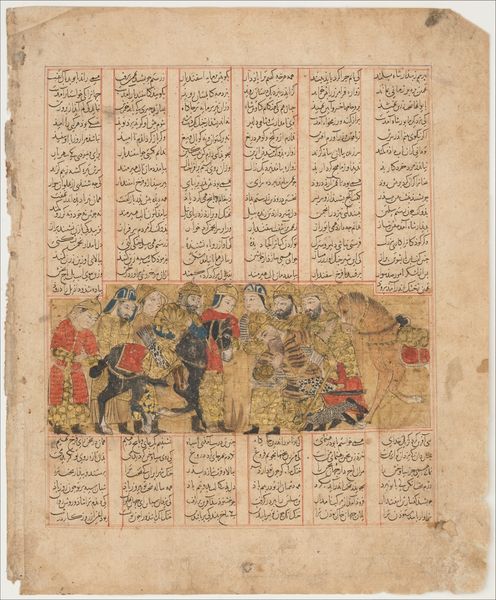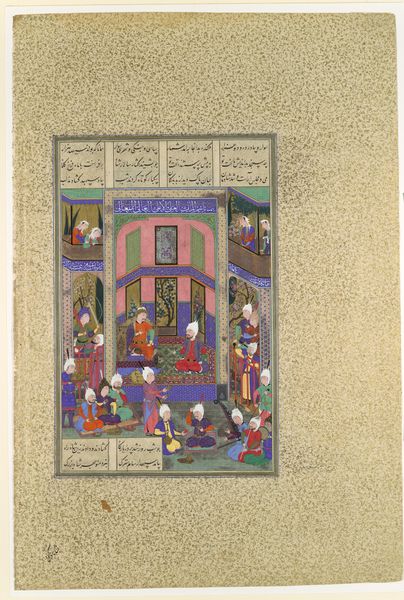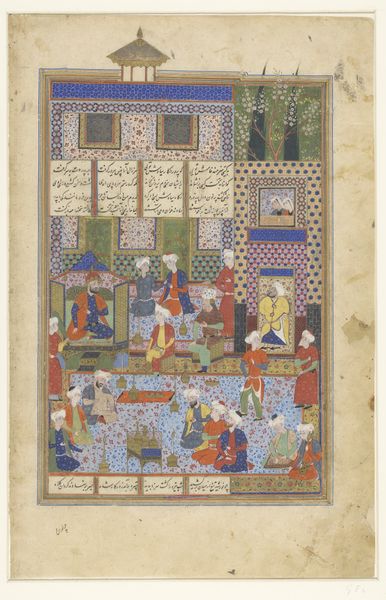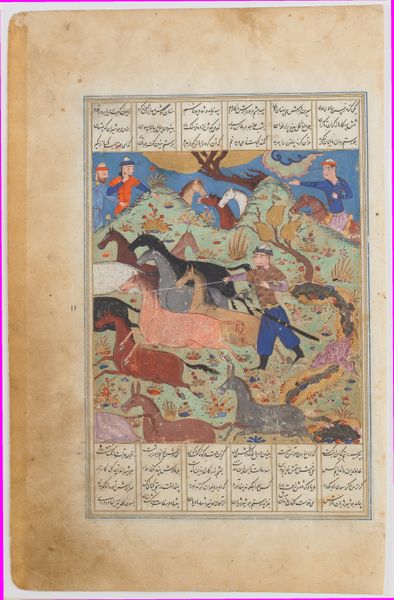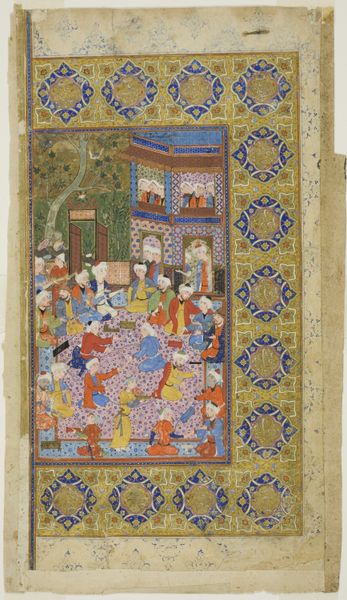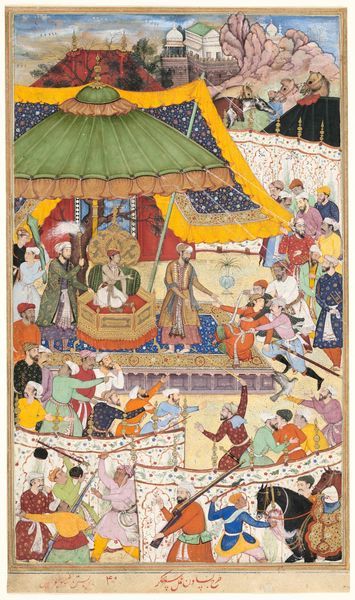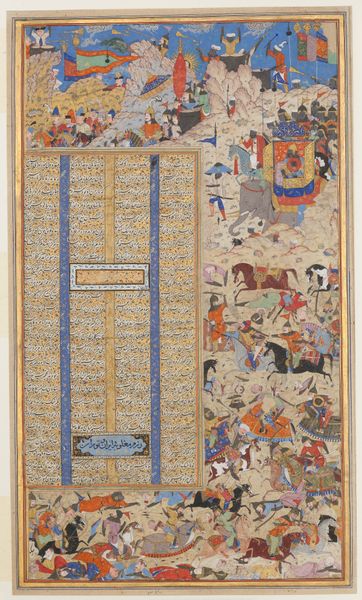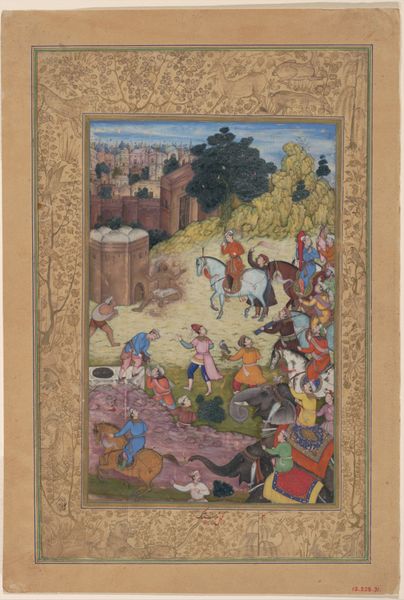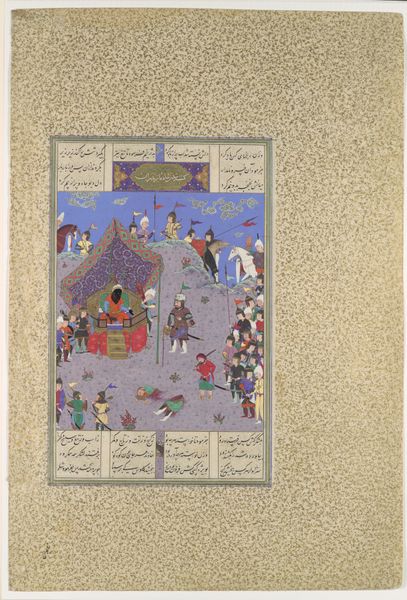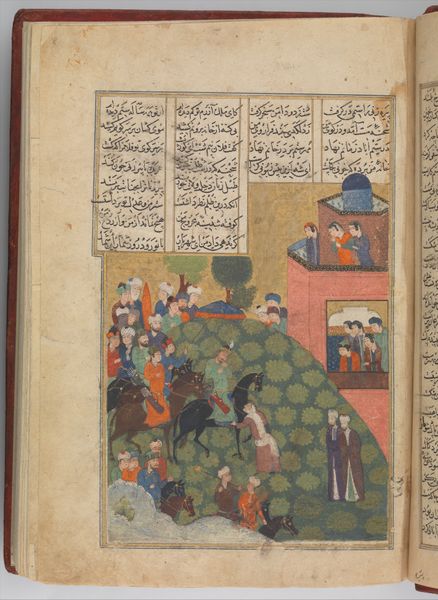
"Ottoman Army Entering a City", Folio from a Divan of Mahmud `Abd al-Baqi 1575 - 1599
0:00
0:00
painting, watercolor
#
narrative-art
#
painting
#
watercolor
#
men
#
cityscape
#
islamic-art
#
miniature
Dimensions: Page: H. 10 1/4 in. (26 cm) W. 6 5/16 in. (16 cm) Painting: H. 7 5/8 in. (19.4 cm) W. 4 5/8 in. (11.8 cm)
Copyright: Public Domain
Editor: Here we have "Ottoman Army Entering a City," a watercolor and painting on a folio from a Divan, created by Mahmud 'Abd al-Baqi sometime between 1575 and 1599. It’s brimming with figures, all meticulously rendered; the overall effect feels quite grand and theatrical. What’s your interpretation? Curator: Looking at this miniature, I see a very deliberate construction of Ottoman power and imperial spectacle. Consider the prominent placement of the city's gate – it's a stage where the Sultan, ensconced above, surveys his victorious army marching in. This wasn't merely about depicting an event, but about crafting and disseminating an image of Ottoman dominance. What message do you think the artist intended to convey to its viewers? Editor: It does feel carefully staged, almost like propaganda. Maybe it was to inspire awe, but also to warn other powers? Curator: Precisely! Such imagery played a significant role in projecting authority. The attention to detail in the soldiers' uniforms and the architecture – a specific display of the Empire’s strength and sophistication – intended for consumption by both internal elites and external audiences, helping cement Ottoman legitimacy. Editor: It’s interesting how the architecture almost acts as a frame for the action, drawing our eye to the figures within. Curator: Absolutely. The built environment is not just background; it reinforces the idea of Ottoman control over territory and resources. It serves to demonstrate how they have not just militarily conquered, but also laid claim to cultural spaces. Considering the location of the piece in the Metropolitan Museum, do you think its impact shifts? Editor: That’s a great point! Seeing it here detaches it from its original context… maybe turning it into something beautiful and historical, rather than purely political? Curator: Exactly. The meaning changes with its placement. Understanding this interplay – between creation, context, and reception – gives us a fuller picture of its significance. Editor: I’ve never thought of it that way. That reframes how I view art in museums entirely.
Comments
No comments
Be the first to comment and join the conversation on the ultimate creative platform.

